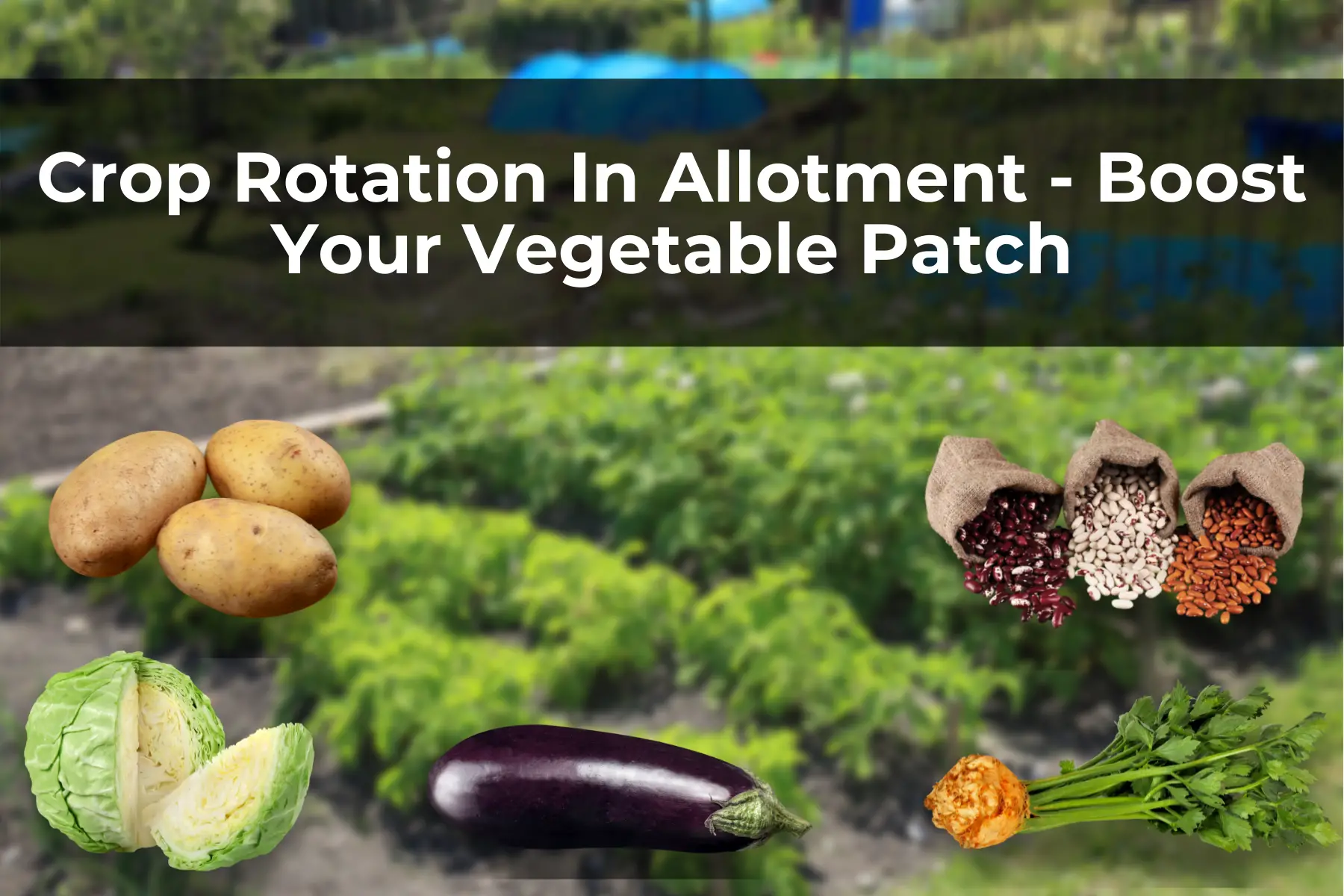Last Updated on April 10, 2024 by Real Men Sow
Crop Rotation in allotment is defined as a systematic practice of growing a series of dissimilar types of crops on the same piece of land. This article will help you to decide which vegetables can be grown together so that you can improve your chances of a bumper crop.
The idea is that pests and diseases are less likely to build up resistance to a particular group of plants, unlike monoculture where all plants are exactly the same.
Are you able to tell which vegetables can be grown together? The best way to ensure a bumper crop is to know when and where you should plant your vegetables.
The Four Major Groups Of Vegetables
Brassicas
Members of the cabbage family, including cabbage, Brussels sprouts, and cauliflower.
Legumes
Members of the pea family, including broad beans, peas, and clover. However, French and runner beans may be grown where it is convenient. Root nodules in legumes can fix nitrogen and, if left in the soil, they will benefit later crops.
Family of Potatoes
Tomatoes and potatoes (peppers, aubergines, and others can also be grown in any part of the rotation).
Roots
Beetroot, carrots, celery, and celeriac. Also parsley, parsnips, Florence fennel, and all other root crops, except swedes.
How Crop Rotation in Allotment Works
Divide your growing area into several areas and identify the crops that you wish to grow. Then, keep the same plants together in the same area. Each year, the plants in each area are modified so that each group, with its unique needs, habits, and diseases, can enjoy the new ground.
Crop rotations are usually run for three to four years. This is because it takes most soil-borne diseases and pests to become harmless. Your beds can be divided into four groups so that different plant families won’t share the same place over a 4-year period. Soft fruit, rhubarb, and asparagus are perennial vegetables that can’t be replanted every year. They may also need their own bed.
What About Modern Crops?
Although the old system didn’t account for modern crops like sweetcorn and courgettes, many people don’t want to dedicate a quarter to maincrop potato cultivation. If this is the case, you can divide your plot into three pieces and plant courgettes with beans and peas.
In the spaces between slower-growing, larger crops, salads and other quick crops may be grown. There is plenty of space for onions, pumpkins, leaf salads, and other fruiting and stem vegetables, but it’s not uncommon to grow onions with legumes.
What To Do If You Forget To Crop Rotate in Allotment
In all the excitement over your new allotment, you might forget what you had grown on the same piece of ground last year. These important points are key to remember:
- Avoid planting potatoes in the same place twice a year, as they are hungry and can cause soil to become depleted.
- After growing potatoes, add lime to the soil and plant peas and beans on that patch of ground. Peas, beans, and other legumes are excellent nitrogen fixers. They provide nutrients for all crops that follow them, even brassicas.
- Root crops don’t like manure so it’s best to not add manure before you plant. Apply manure after you have harvested root crops in the autumn to replenish the soil in preparation for potato planting.
What About Perennial Vegetables?
Perennial vegetables, such as rhubarb and artichokes, need to be kept in separate beds. Asparagus requires its own bed, and it will take several years to harvest.
Planning the Order of Crop Rotation in Allotment
Brassicas are like legumes. Sow cabbage, cauliflower, and kale in soil that was previously used for beans or peas. These plants fix nitrogen in the soil while the former reap the benefits of nutrient-rich conditions. Brassicas are also good for potatoes, but they prefer different pH levels.
Roots and very rich soil don’t mix. Avoid planting root vegetables in areas that have been fertilized heavily. This will result in lush foliage which can be detrimental to the plant’s edible parts. You should sow parsnip in an area that has been home to demanding crops such as brassicas because they will have reduced the rich compounds.
Example of a Four-bed Rotation
- Area 1: Add compost to the area and plant tomatoes and potatoes (Solanaceae). After the crop is finished, sow onions (Allium), or leeks (Allium), for an overwintering crop.
- Area 2: Sow parsnips (Umbelliferae), carrot, and parsley. In winter, fill in the gaps with lettuce.
- Area 3: Plant cabbage, kale, and rocket (Brassicas), in the summer, and then follow up with winter varieties.
- Area 4: Harvest the onions and leeks that were grown here during winter if this is your second year or subsequent. Sow beans and peas (legumes) after the harvest is complete. After harvest is finished, lime soil allows brassicas to move from area 3 to the next.


